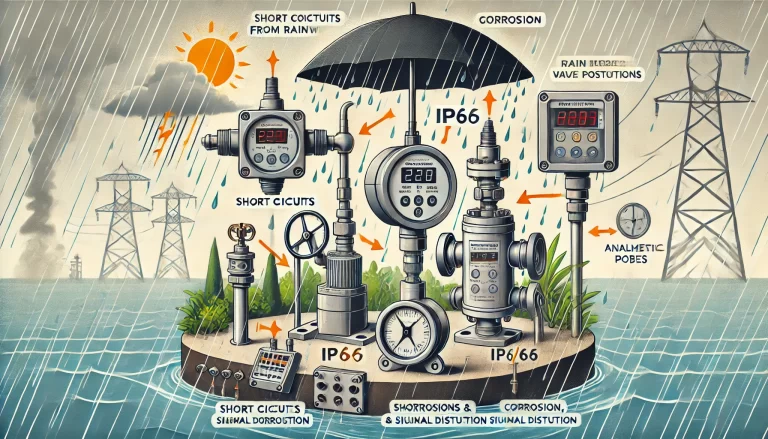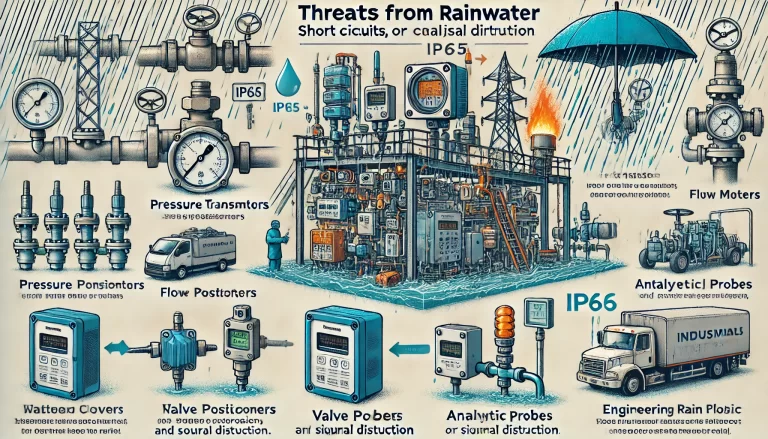During the peak of summer, heavy rainfall and typhoons are frequent occurrences. For industrial instruments exposed to outdoor environments—such as pressure transmitters, flow meters, valve positioners, analytical probes, and junction boxes—rainwater is more than a simple environmental factor. It is a hidden killer that directly threatens their accuracy, reliability, and service life. Neglecting waterproof protection can lead to consequences far beyond imagination.
1. Direct Physical Damage
Water Ingress and Short Circuits:
Rainwater entering junction boxes, connectors, or enclosures can easily cause electrical short circuits, burning delicate circuit boards.Signal Drift and Distortion:
Moisture affecting sensors or terminals leads to abnormal signals and unreliable data, which compromises process control accuracy and product quality.Corrosion and Jamming:
Rain (especially acid rain or salt-laden mist in coastal regions) accelerates rusting of metal housings and moving parts such as valve positioners, causing operational failures and drastically reducing lifespan.Sensor Failure:
Sensitive components like analytical probes may suffer direct impact from rain or prolonged immersion, resulting in permanent damage or severe performance degradation.

2. Indirect Production Losses
Unplanned Downtime:
Unexpected instrument failures can force emergency shutdowns of production lines, leading to significant financial losses.High Maintenance Costs:
Repair or replacement of damaged instruments, combined with emergency manpower and resource deployment, increases operational costs.Safety Risks and Quality Fluctuations:
Faulty critical instruments may trigger process instability, creating potential safety hazards or even batch product scrapping.Increased Maintenance Burden:
The rainy season often requires more frequent inspections and urgent troubleshooting, consuming valuable maintenance resources.

3. Rain Covers: A Key Protective Measure
Building a Physical Barrier:
Rain covers with IP65/IP66 or higher protection ratings (featuring precision seals and robust structural design) effectively block direct rain, splashing, and condensation intrusion, preventing short circuits, rust, and sensor damage.Guiding Rainwater Drainage:
Specially designed sloped tops and drainage channels ensure water runs off quickly, preventing pooling that could cause ongoing erosion.Withstanding Harsh Environments:
Made from UV-resistant, corrosion-resistant engineering plastics or stainless steel, these covers can endure summer heat, acid rain, and salty air, ensuring long-term service even in severe conditions.Ensuring Stable Operation:
By creating a relatively stable microenvironment, rain covers help maintain measurement accuracy, extend the lifespan of core devices, and significantly reduce rain-induced failures.
✅ Key Takeaway:
Choosing the right rain cover is not a trivial accessory decision—it is a strategic move to safeguard your instrumentation, production continuity, and operational safety during the challenging summer months.
